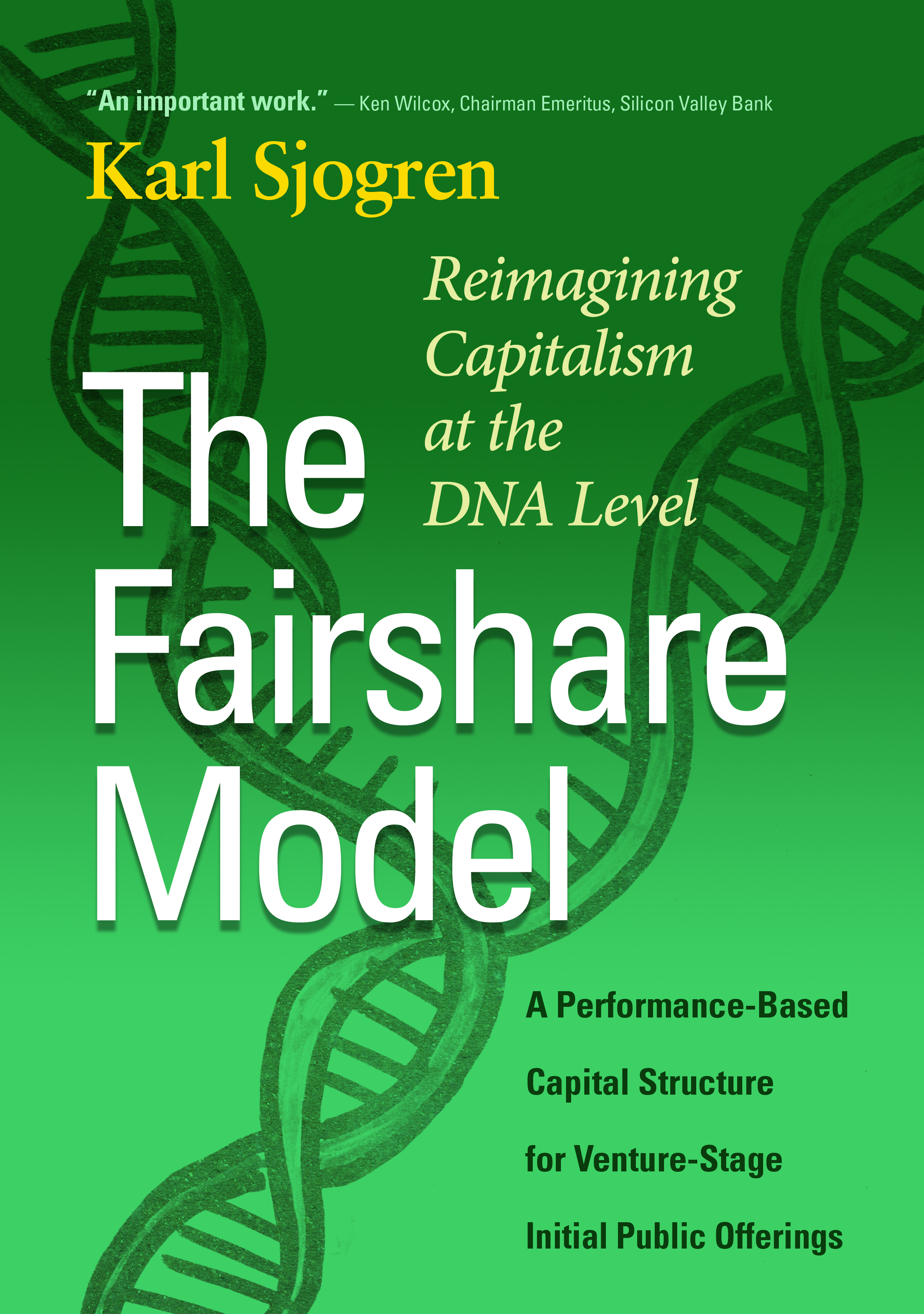This is the second in a series of articles that discuss ideas in my book, The Fairshare Model, which is available on Amazon. Links to other articles are at the end. -------------------------------------------------------------------------
Several startups will raise venture capital via a public offering this year. My new book presents a idea for how to structure an IPO for a startup—be it a highly-valued "unicorn," a less-anticipated "horse," or a new "pony." It is called The Fairshare Model: A Performance-Based Capital Structure for a Venture-Stage Initial Public Offerings.

In a Fairshare Model IPO, there are two classes of stock—both vote but only can trade. IPO and pre-IPO investors get the tradable stock. Employees get too, for performance-delivered as of the IPO. For future performance, employees get a non-tradable stock that converts to the tradable stock based on milestones described in the company’s offering document. It protects IPO investors from overpaying for a stock.
Traditionally, IPOs use a “conventional capital structure,” while private offerings with valuation-savvy investors use a “modified conventional capital structure.” Both are conventional in the sense that each sets a value for company’s future performance when the stock is sold. The modifications are deal terms like price-ratchets and liquidation preferences that protect investors from overpaying for a position. Thus, such terms provide investors in a company that uses a modified conventional capital structure with “price protection.”
Price protection is a terrific idea—without it, venture capital and private equity funds would not be nearly as profitable as they have. The problem is that price protection is not provided to IPO investors.
The Fairshare Model changes that with an unconventional approach—it places no value on future performance when an IPO occurs. Rather than pay upfront for potential, investors pay for actual performance via dilution of their percentage ownership of the outstanding tradable stock.
Valuation risk is the risk that new investors overpay for a company’s future performance. The following chart illustrates how valuation risk varies based on the capital structure used.

- Valuation risk is highest for investors with a conventional capital structure, the type routinely used in IPOs and in some private offerings.
- It is considerably less with a modified conventional capital structure—which is why VC and private equity firms require one when they invest in a private offering.
- Remarkably, valuation risk is near zero for IPO investors when the Fairshare Model is used.
To be clear, the Fairshare Model is just an idea at this point—companies will not use it for their IPOs until a critical mass of investors express interest in it.
The next five charts drill-down on these assertions about valuation risk. The first one presents four basic characteristics about how companies raise capital.

It indicates that:
- Investors provide two kinds of capital—debt or equity.
2. There are two ways for a company to raise capital—a private offering or a public one.
- Note: only accredited—that is, wealthy—investors may invest in a private offering, but anyone may invest in a public one.
3. Companies that raise capital are either established, or venture-stage.
- Established companies have an operational track-record and profitable.
- Venture-stage companies are startups or companies in a turnaround situation—they are rarely profitable, and need infusions of fresh capital always hard to reliably value when an equity investment is made.
4. Deal structures either provide price protection or don’t.
The second chart shows how a conventional capital structure is positioned. On occasion, it is used to raise equity capital in a private offering—usually when the investors are unsophisticated. It is routinely used in public offerings, however. Also, it is used by both established and venture-stage companies and—significantly—it offers investors no price protection.

The third chart shows how a modified conventional capital structure is positioned. It is used to raise equity capital in a private offering for venture-stage companies using deal structures that provide price protection. I sometimes refer to it as the “VC Model” because VC funds use it when they invest in a company.

The fourth chart has the Fairshare Model—it is for raising equity capital in a public offering for venture-stage companies, using deal terms that provide price protection.

The fifth and final chart has the key point—the Fairshare Model applies the VC Model to an IPO.

Here are ways to defer valuation risk in an equity investment that do not deserve to be listed above:
- Convertible note: When the investment is made, it is structured as debt, not equity. Should a promissory note convert to stock, it is structured in one of the forms above.
- "Simple Agreement for Future Equity": A SAFE is not listed because the investment is structured as debt or as a deposit—it is not equity.
- "Keep It Simple Security": A KISS is not listed above for the same reason a SAFE isn’t.
- Digital token (ICO, STO, etc.): Tokens are not listed because they rarely convey an equity interest—they typically represent a contribution or a deposit. Also, they don’t provide a way to deal with valuation that isn’t addressed a conventional capital structure, a modified conventional capital structure, or the Fairshare Model.
Other articles in this series
· #1: The Launch of a Movement to Reimagine Capitalism at the DNA Level




